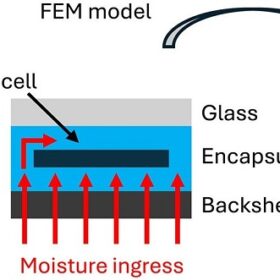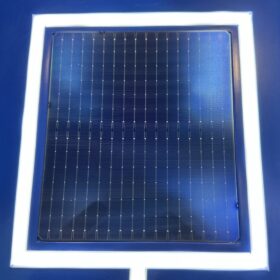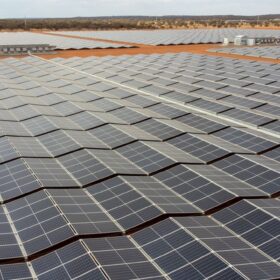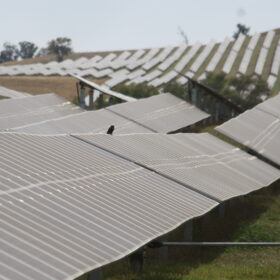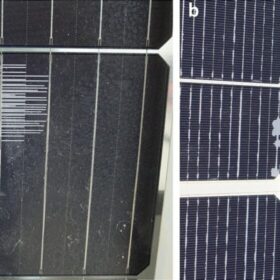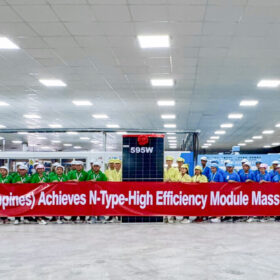Scientists discover new failure mode in LECO-treated TOPCon solar cells
An international research team has observed a significant increase in series resistance in LECO-treated TOPCon solar cells after temperature and bias treatment. The scientists said they now need to conduct further investigations into its impact on cell efficiency, reliability, and bankability.
New model to predict moisture ingress in photovoltaic modules
Researchers in Netherlands and Belgium have created a numerical model to simulate the moisture ingress in PV modules. Their research work showed that climate in which a PV module is installed has a much higher impact on the moisture ingress than the choice of materials for the encapsulant of the backsheet.
All solar cell efficiencies at a glance – updated
The research group led by Professor Martin Green has published Version 66 of the solar cell efficiency tables. There are 21 new results reported in the new version.
Perovksite-TOPCon tandem solar cell based on self-assembled monolayer achieves 31.1% efficiency
Researchers in China have fabricated a perovskite-TOPCon solar cell with a top perovskite device utilising a self-assembled monolayer aimed to improved cell stability. The tandem cell achieved a high fill factor and a certified efficiency of 30.9%.
5B’s Maverick technology shines with $46 million Solar SunShot backing
Modular solar developer 5B is Australia’s first recipient of the federal government’s $1 billion Solar SunShot program, receiving $46 million to increase the manufacturing capacity of its Maverick unit.
Scientists build photovoltaic-thermal panel hosting four different cooling techs
Researchers from the Middle East have simulated a novel PV thermal module which includes a thermoelectric generator above the absorber layer, conical helical tape in the cooling tube and a ferrofluid. These technologies reportedly contributed to increased PV efficiency and thermal efficiency by 2.12% and 23.34%, respectively.
Australian-made panel tops consumer group’s product test
A monocrystalline PERC solar panel manufactured by Tindo Solar has been rated the top-performing rooftop module in Australia by consumer advocacy group Choice.
How to assess bifacial PV system performance on sloped terrains
Scientists have developed a precursor formulation for different PV simulation tools that can help calculate the expected performance of solar farms deployed on hilly slopes. Validation tests against an experimental setup showed an error of less than 3%.
Three-year field test shows TOPCon, HJT solar module reliability in desert areas
A three-year field experiment comparing the performance and reliability of passivated emitter and rear cell, tunnel oxide passivated contact, and silicon heterojunction solar modules in desert climates found that HJT modules exhibited the highest degradation, while TOPCon modules showed the lowest degradation.
Gstar launches solar cell, module production in Philippines
Gstar has completed the first phase of its factory in the Philippines, set to produce 1 GW of solar modules and 1.5 GW of solar cells. The Singapore-based solar manufacturer says a planned second phase will take its solar module nameplate capacity to 2 GW.

